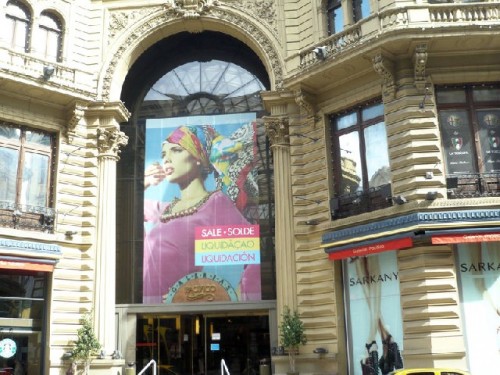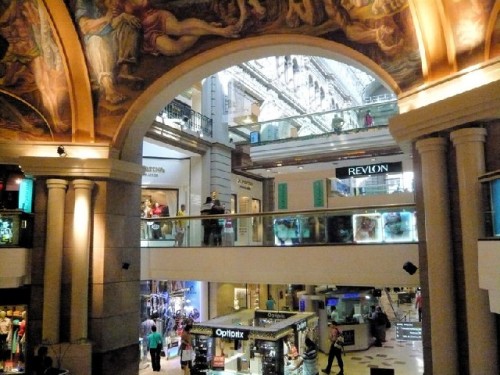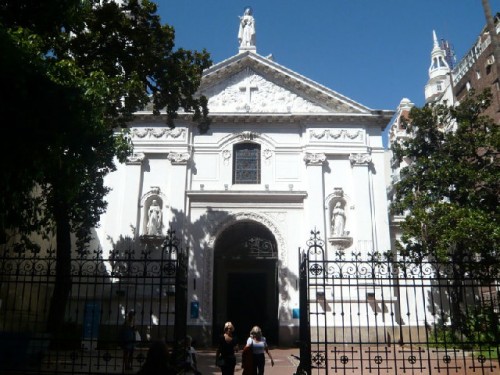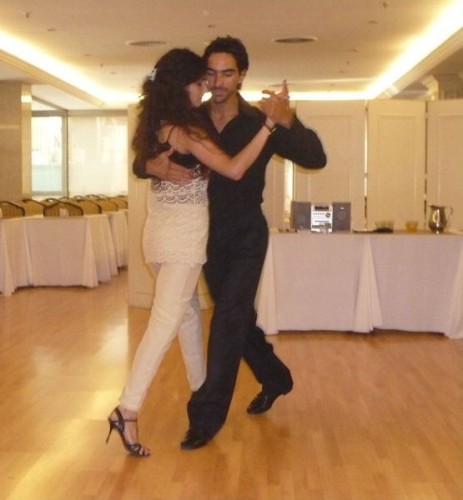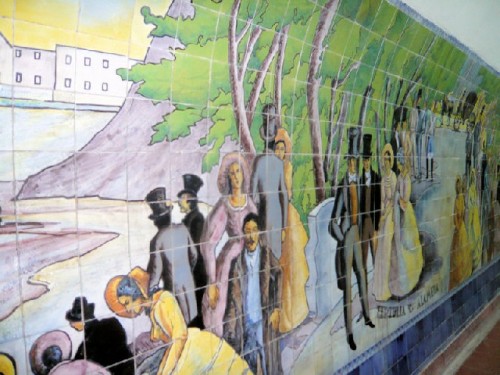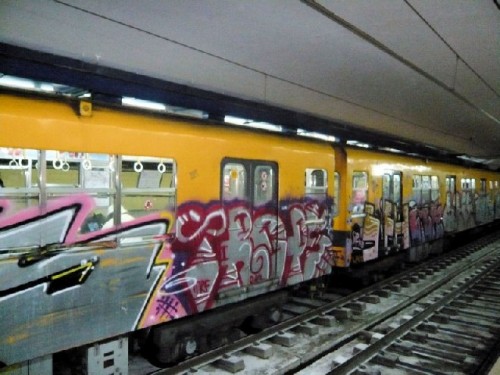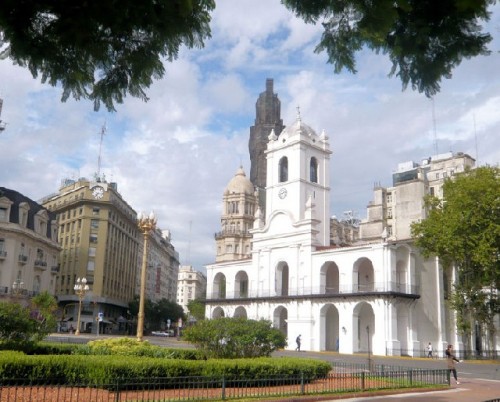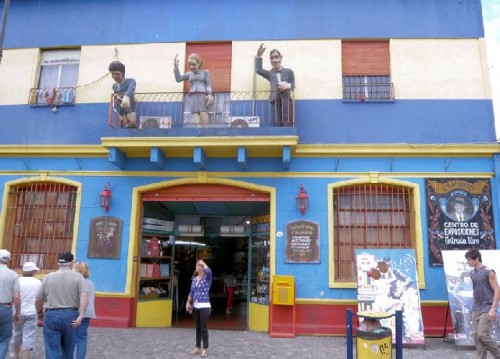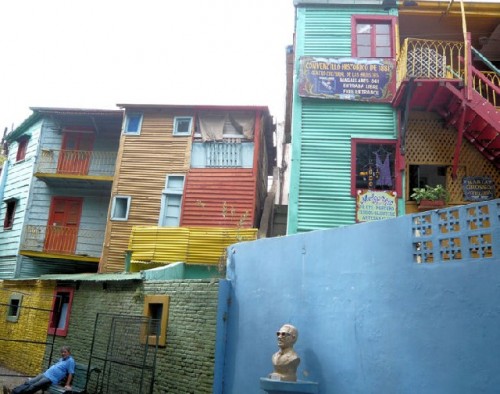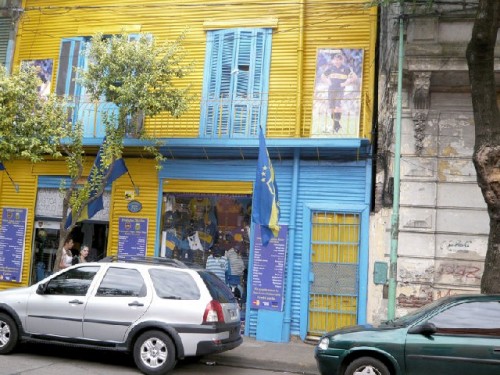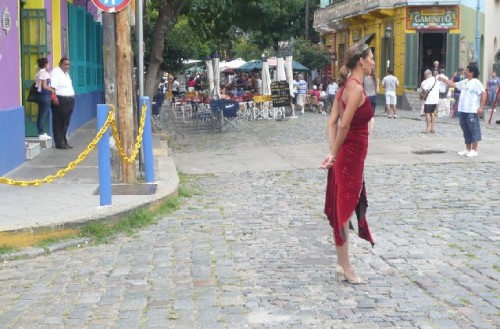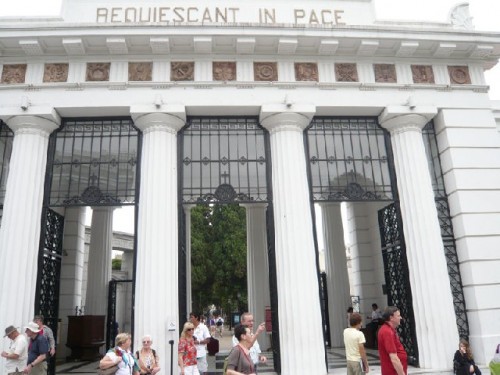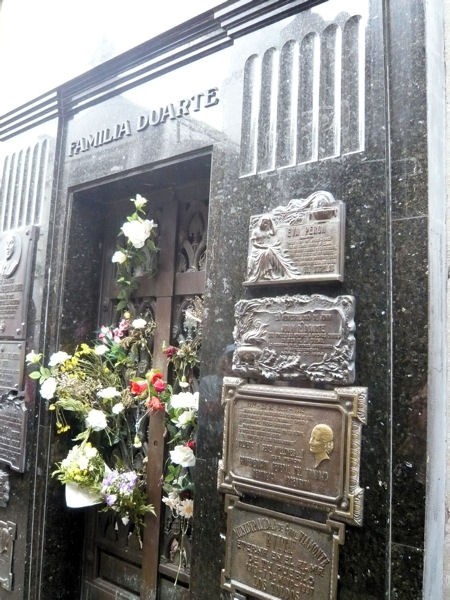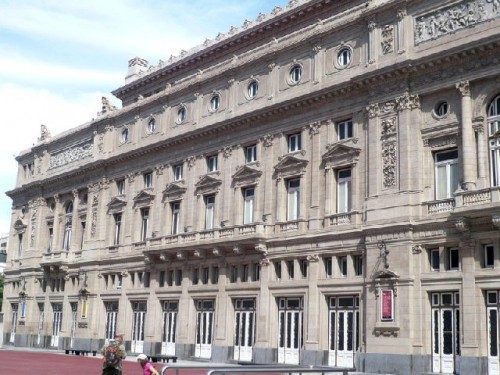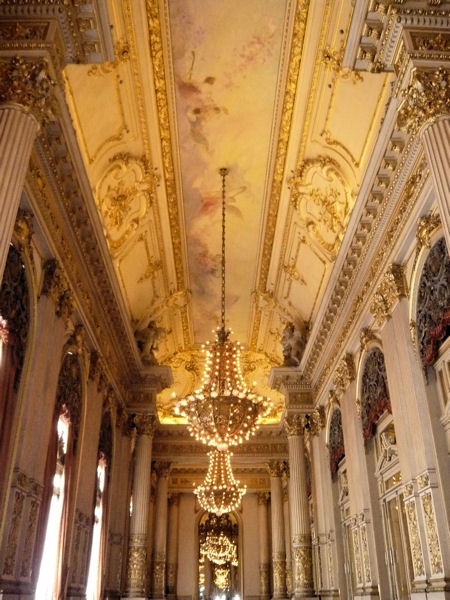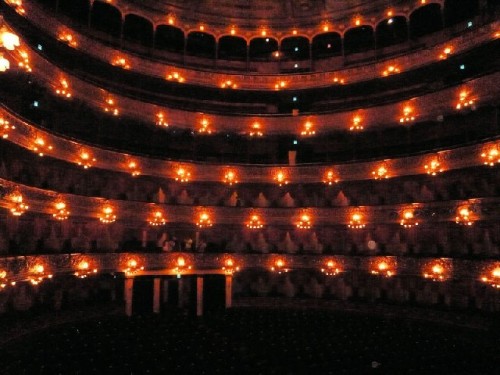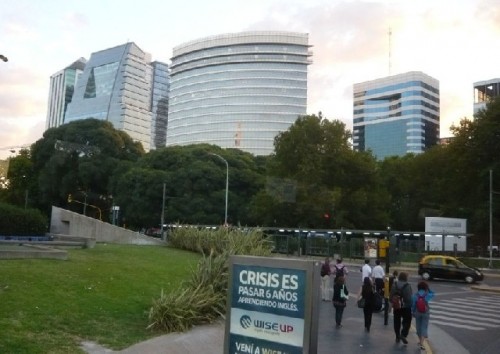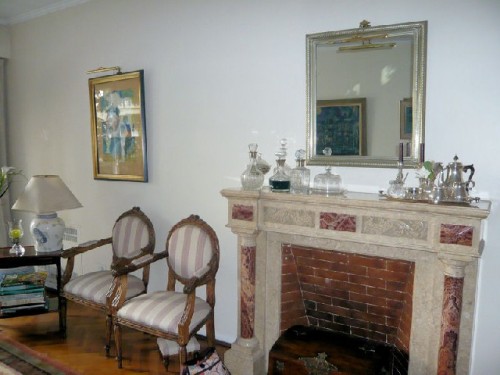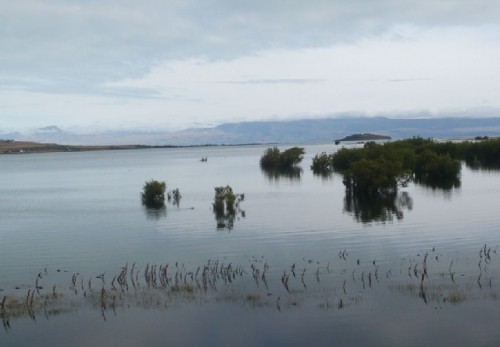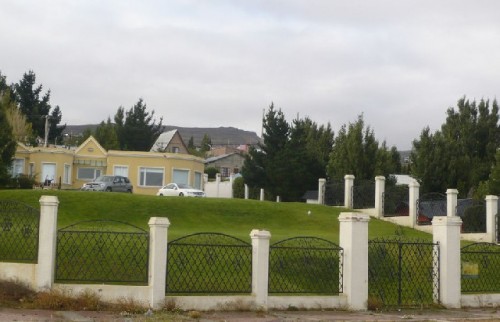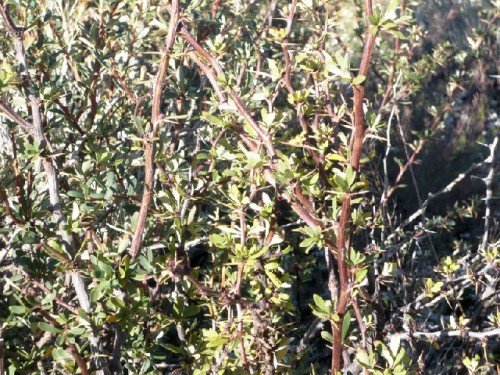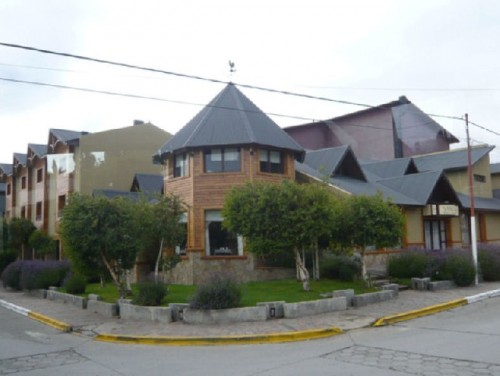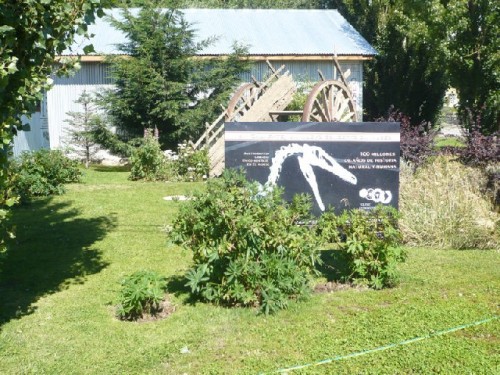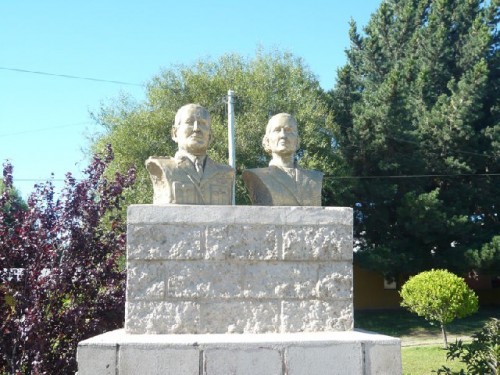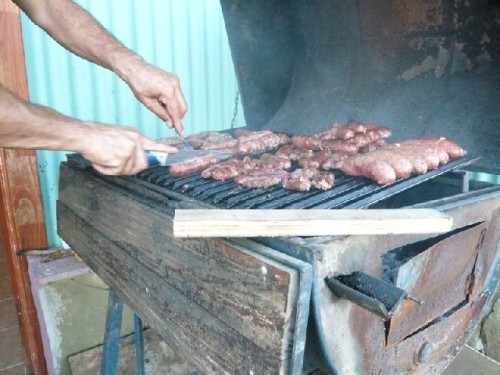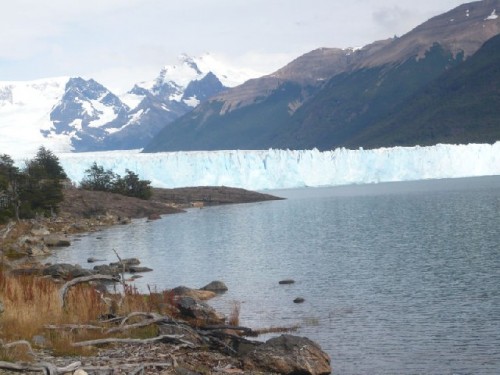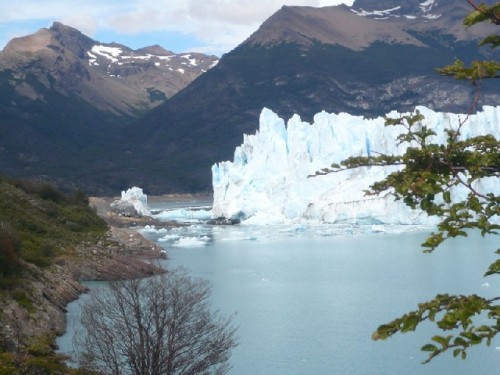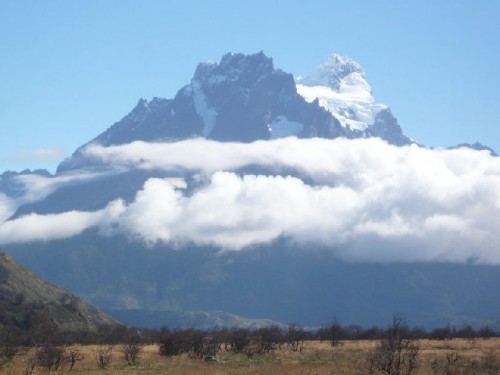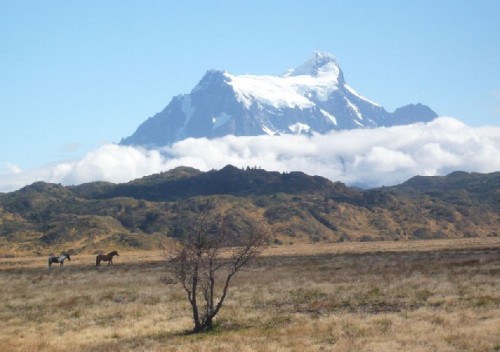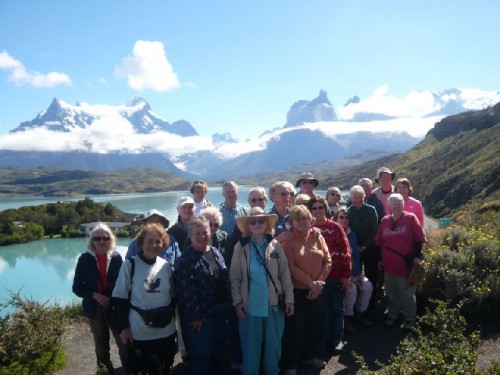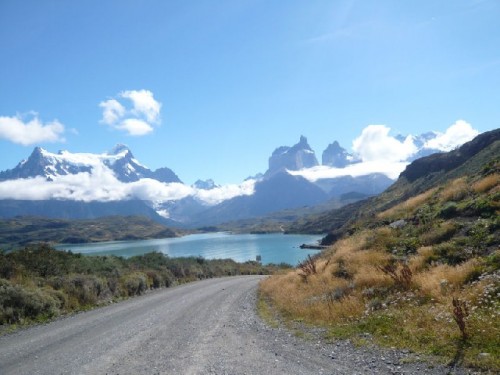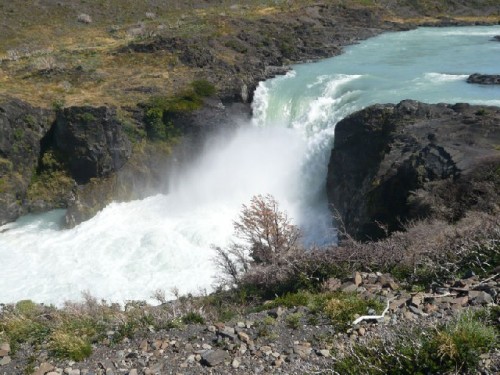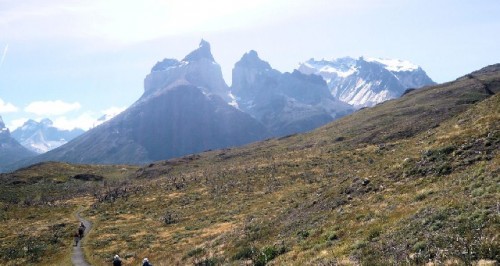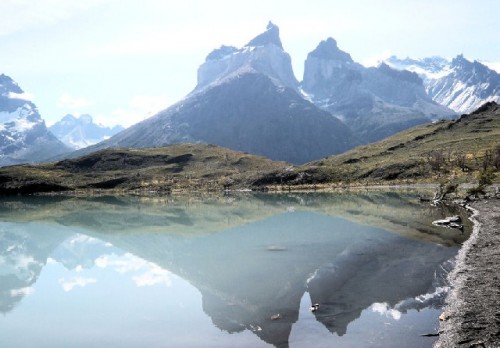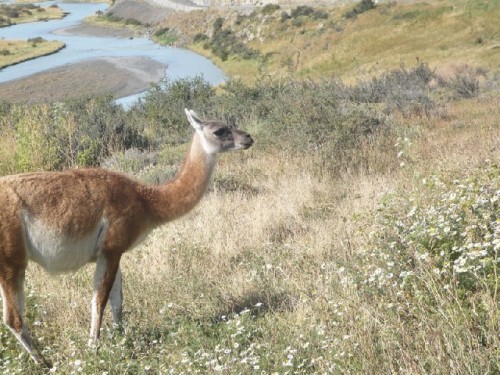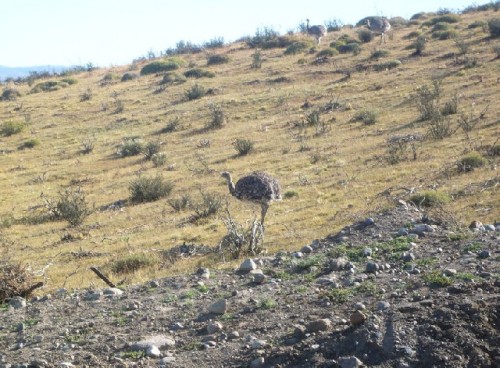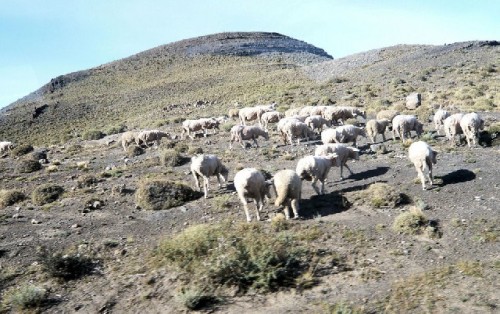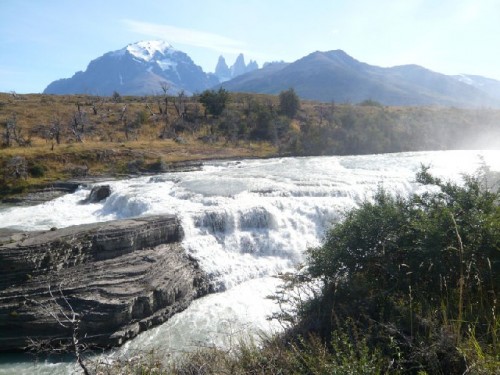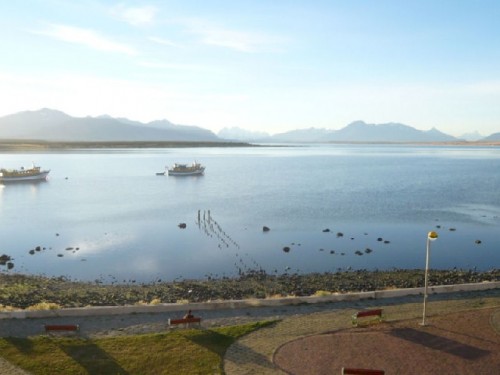Chile and Argentina: Part Two
Buenos Aires, El Calafate and Patagonia
By: Zeren Earls - Apr 07, 2013
On the way back from Easter Island, an overnight stopover in Santiago allowed us to refresh before flying to Buenos Aires, the beginning point of our main trip to Patagonia. Upon arrival we met the other twelve members of the group at the Amerian Park Hotel, our home for the next two nights. An orientation walk in the surrounding neighborhood of the centrally located hotel introduced us to Galerías Pacífico, a block-long shopping mall with murals on vaulted ceilings and upscale stores connected by passageways. Across from this beautiful structure stood another architectural treasure – a colonial convent with a lovely courtyard. Nearby was an ice cream parlor, known for its local flavor, dulce de leche. Warm weather prompted me to try it.
Following a trip briefing, which included a warning to watch out for pickpockets, we had a short tango lesson by two practitioners of the art. A handsome couple – she in a white lace top and spike heels, he with slicked-down hair and dressed in black – inspired us with their grace and passion, which the dance requires. Then they taught us the basic steps, which we tried to remember as we danced with one another. Originated by immigrant workers in the port city during the 1880s to express their sorrow and loneliness, tango has evolved into a popular dance enjoyed by all Argentinians. A welcome dinner at a nearby restaurant introduced us to what locals eat and drink most of the time – steak accompanied by bread, salsa, and red Malbec wine.
In the morning we took the subway (subte) to the Plaza de Mayo, the historic city center, commemorating the city’s independence from Spain on May 25, 1810. The underground station featured ceramic tiles depicting the city’s colonial history, and the trains displayed exuberant graffiti. The attractive Plaza with its gardens is set off by surrounding colonial buildings, the most eye-catching of which is the Casa Rosada (Pink House), the seat of the executive branch of government. The Catedral Metropolitana (1827) has twelve neoclassical pillars in front, said to represent the apostles. Inside are five naves with important relics and wood engravings. The oil paintings on the walls are attributed to the Flemish master Peter Paul Rubens (1577-1640). Most importantly, the Catedral houses the tomb of General José de San Martín, liberator of Argentina, Chile, Peru, and Ecuador. Two guards stand at attention at either end.
On the Plaza’s western end is the elegant Cabildo, or City Hall, where Argentine independence took its first steps in 1810. Originally spanning the length of the Plaza, over the years the building has been reduced to the size of two arches on either side of the central balconies to widen the Avenida de Mayo. Buenos Aires enjoys wide avenues; at 140 meters across, the widest is the Avenida 9 de Julio, which includes the Obelisco, rising towards the clouds. Built in 1936, the obelisk commemorates the 400th anniversary of the city’s founding.
A stroll through La Boca was most enjoyable. The city’s southern port barrio (neighborhood) recalls the first Italian immigrants. Built to be shared by working-class people, the brightly painted houses have apartments along long corridors. Most houses are of corrugated aluminum and flank cobblestone streets, shaded by tall sycamore trees. Some of the houses pay tribute to soccer, the national passion, by featuring murals of players and team flags on the facades. In one of the shops I bought a small bag made of cow leather, tattooed with colorful flowers. My other purchase was from a sidewalk artist – an oil-on-paper painting of a typical Boca street scene.
Another highlight of the city tour was a visit to Recoleta, an upscale northern neighborhood, including the famous Cementerio de la Recoleta, where many rich and famous people, including Eva (“Evita”) Perón — the popular hero of the working class and women’s rights — rest in ornate splendor. Inside the gates, pathways paying tribute to the city’s architectural and artistic legacy interconnect like a maze. By the looks of the crowds and the pile of flowers on the door, the most visited tomb is that of the Duarte family, where “Evita” Perón is buried 30 feet underground to keep enemies from stealing her body.
During our free time in the afternoon, my roommate Nancy and I went on a guided tour of the famed Teatro Colón, one of the world’s finest opera houses. Built in 1910 by Italian architects with materials brought from Italy, the building has recently opened after ten years of renovation. The spectacular theater is covered in gold leaf, crystal, marble, and velvet. The boxes in the seven stories of balconies have no partitions, so that sound keeps moving to ensure perfect acoustics. The theater seats 2500 spectators and has standing room for another 1000. Each opera is performed six times and a gala opening requires formal dress. Perón introduced a weekly free night on Mondays so that members of trade unions could attend. Also home to the ballet and the symphony, the building hosts no performances during the summer months of January, February, and March.
Our home-hosted dinner was memorable indeed. My group of eight visited the home of a corporate lawyer and his family. The flat with its balcony looked onto a great deal of greenery and was furnished with antiques. Individually lit paintings adorned the walls, which also had niches displaying objects of art. Served by our hostess and her mother, we enjoyed a meal of empanadas, meat loaf with potatoes or rolls filled with spinach and sweet potato. Vanilla flan with dulce de leche on the side completed the meal. Following good conversation and camaraderie, we bade the hosts farewell and returned to our hotel.
We were woken by an alarm at 2am, to ensure our timely arrival at the airport for a 4:45 flight to El Calafate, the starting point of our Patagonia journey. The 3-and-a-half-hour flight south brought us near the Chilean border to El Calafate, on the southern shore of the beautiful Lago Argentino. Named for the indigenous calafate bush, the fast-growing town of 18,000 with its new international airport is nestled at the base of cliffs. It looks like an Alpine village, although a laid-back one, as most places close between 1 and 4pm, opening again till late in the evening.
After check-in at our hotel and a lunch identified on the menu as “vegetable medley”at a local restaurant across the street, I decided to explore the town by foot. Starting at the small Natural History Museum, I viewed exhibits ranging from the region’s extinct dinosaurs to native cultures, including symbols painted on stone and bark cloth. Visiting the Arte Indio shop afterwards, I was delighted to see these ancient symbols still in use by local craftsmen.
In the evening we met a friend of Berenice’s at Casa Verde, a visitor center by the lake. While enjoying the view of the water with ducks, we were treated to sausages cooked over a charcoal fire. The dessert was an unusual combination of sweet and salty – a slice of Asiago cheese wrapped in a paste of sun-dried quince and sweet potato jam.
In the morning we set out for a full-day excursion to Los Glaciares National Park, a UNESCO World Heritage Site. Within its 1700-square-mile area, the park is home to 50 large glaciers fed by a giant icecap which begins in the Andes. Our scenic drive followed the shoreline, with snow capped mountains reflecting in the lake. We spotted caracara birds and juvenile condors with outstretched wings on trees stripped barren by high winds. We also drove by windswept Patagonian steppes.
Entering the park on a sunny day made my first glacier encounter all the more magnificent. Named after explorer Francisco Moreno, who helped to resolve the border dispute between Argentina and Chile, the Perito Moreno Glacier is a marvelous wall of ice towering nearly 200 feet above Lake Argentino; it glitters at eye level. The constant cyclical movement of its ice mass forces the glacier to “calve.” This refers to the process whereby chunks of the glacier fracture and break off with a thunderous sound, creating bluish bubbles as they penetrate the surface of the water. I stood there waiting for the next rumble, while totally absorbed in the beauty of my surroundings. After a boxed lunch in the park, we began walking the trails, which were identified by color based on features such as length or panoramic view. Exhilarated by the day’s spectacle, we returned to the hotel.
On the following rainy morning, we began the eight-hour overland journey to Chile. Traveling by coach on a road paralleling the Andes, we passed mountains shrouded in clouds, with peaks breaking through the heavy mist. Fences guarded miles of arid land to keep cattle away from the road. Gauchos at a distance tended to their horses from the estancias, or ranches, nearby. The wind picked up, prompting me to put on my waterproof pants for protection during stops to appreciate the landscape. As we drove through dense fog, Berenice introduced us to the tradition of mate, slowly pouring hot water from a thermos into a gourd over herbal leaves similar to tea. After several pourings, the mate was ready to pass around and enjoy through a straw with a filter at one end to strain the leaves. We stopped for coffee in Esperanza; ending the southward direction here, we turned west to reach the Chilean border.
The southernmost province of Argentina is Santa Cruz; this is also the second largest province, with only 5% of the country’s population of 41 million, after Buenos Aires Province, with 20%. We traveled through Santa Cruz Province on Highway 40, flanked by steppe terrain that appeared to be in the middle of nowhere. We sited red fox, rhea birds (which are related to ostriches), and guanacos.
Crossing the border from Argentina into Chile required patience, as there were other vehicles ahead of us. We cleared passport control and customs by unloading luggage to be screened and then reloaded onto the bus. Once we crossed to the other side, we had to unload luggage again and switch to a bus with a Chilean plate, driver, and guide, as foreign nationals cannot work in Chile. Having complied with all border regulations, an hour and 30 minutes later we were on our way to Torres del Paine National Park, declared a World Biosphere Reserve by UNESCO in 1978.
The road to the park wended its way around numerous mountain lakes. We had a box lunch by Lago Samiento, a big lake with an island in the middle. As we followed the lake’s curvature, we came upon waterfalls with breathtaking views of the frozen cliffs of the Andes in the background. Lago Pehoe was another dramatic spot, reflecting the mountain in its milky grey surface.
The Torres Paine, or “Blue Towers” in the native language, are huge cliffs of varying shapes, carved by water and wind and rising to heights of up to 9000 feet. The granite cliffs were initially formed when sedimentary rock from a subterranean tectonic plate was thrust in the air by bubbling lava twelve million years ago. During our two-hour hike in the park, the terrain changed from bare rock to grassland with grazing sheep to forest. With indelible images etched in our memory, we proceeded to check in to the Hostería Lago Grey, a beautiful lakeside spot where the rooms offered rustic charm and views of the mountain.
Following a delicious meal of carrot and squash soup, calamari, eel fish with spinach soufflé, and flan for dessert, we dropped off to sleep with great anticipation of returning to the park for more hikes the next day.
(To be continued)

